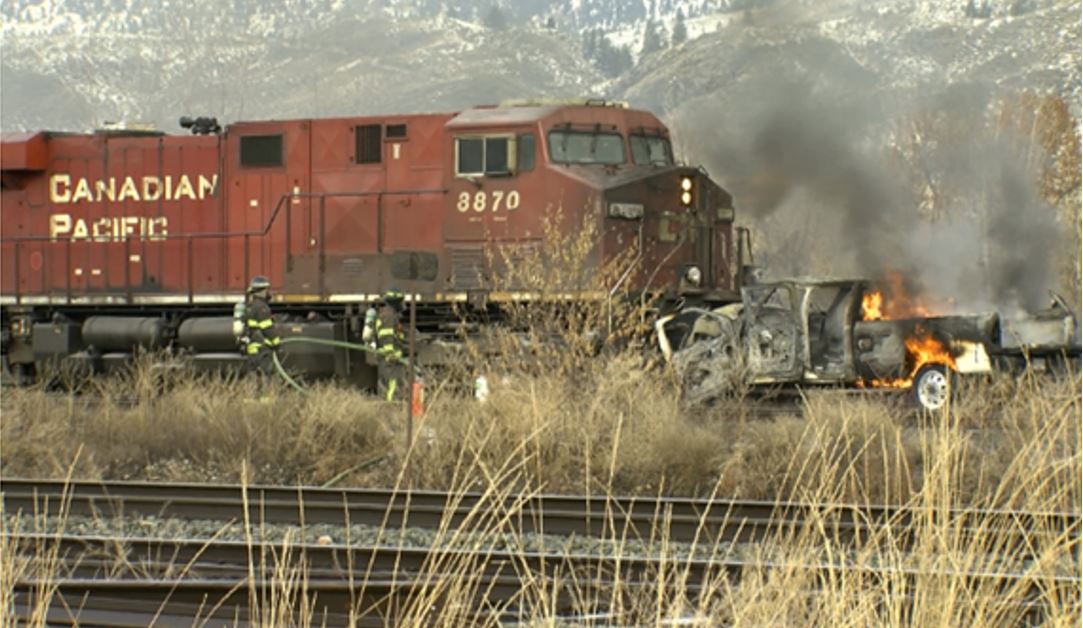
RICHMOND, British Columbia — An error in canceling a track occupancy permit led to a Canadian Pacific train striking a track supervisor’s hi-rail vehicle in a Dec. 29, 2022, incident, the Transportation Safety Board of Canada said in an investigation report released on Thursday, Oct. 17.
No one was injured in the incident near Kamloops, B.C., shortly after 10 a.m., but the hi-rail truck was destroyed by fire [see “No injuries reported in collision …,” Trains News Wire, Dec. 30, 2022].
As a result of the investigation, the TSB sent Canadian Pacific a letter indicating that the procedures for cancelling a track occupancy permit by computer were less rigorous than doing so by radio, and that the railway might want to consider more stringent verification procedures. In response, CP took a number of measures to improve the computer application used to handle the permits.
The track supervisor was traveling on the north track of CP’s Shuswap Subdivision performing visual track inspections when he discovered a rail pull-apart of about 2 inches on the south track at Mile 116.67. The supervisor reported the issue to the rail traffic controller on duty, said he would repair the problem, and requested a requested a track occupancy permit for the south track. He also said he would cancel the occupancy permit for the north track on which he had been traveling.
While working, the supervisor realized he had not yet cancelled the north track occupancy permit. In doing so via the laptop computer in the hi-rail vehicle, he inadvertently cancelled the permit for the south track, instead of the north. While the supervisor and a welder were working, the rail traffic controller — seeing the cancelled permit for the south track— routed eastbound train 302-25 — with four locomotives and 113 empty grain cars — through the work area on that track.
The welder noticed the approaching train in enough time for the supervisor and him to run from the work site to safety; the train’s engineer made an emergency brake application, but the train was traveling at 28 mph when it struck the hi-rail truck.
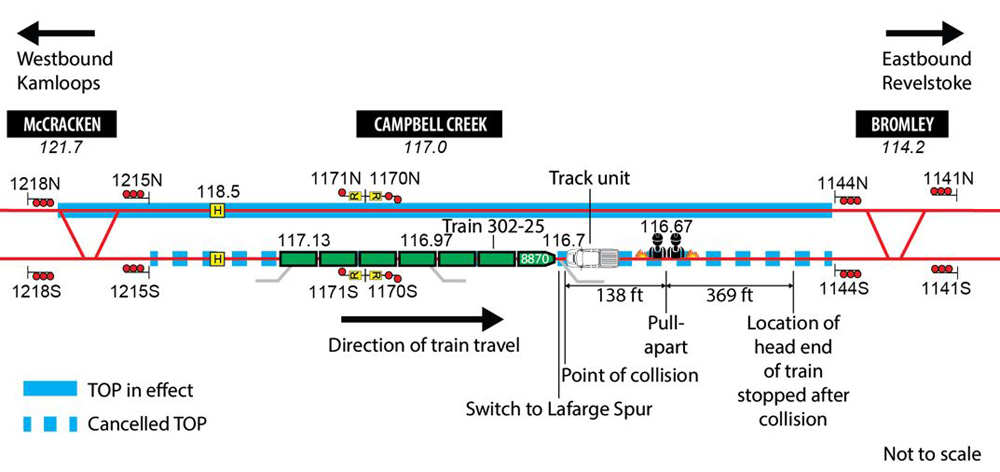
CP’s subsequent moves to improve the safety of the track occupancy permit process included adding time delays to give the employee time to review information when changing permits; added a tool to identify signs of rushing, frustration, fatigue, or complacency, and made other improvements after engaging a company that analyzes interactions between people and machines.






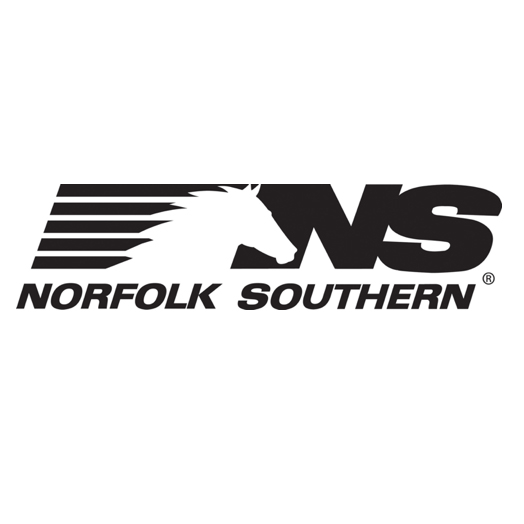
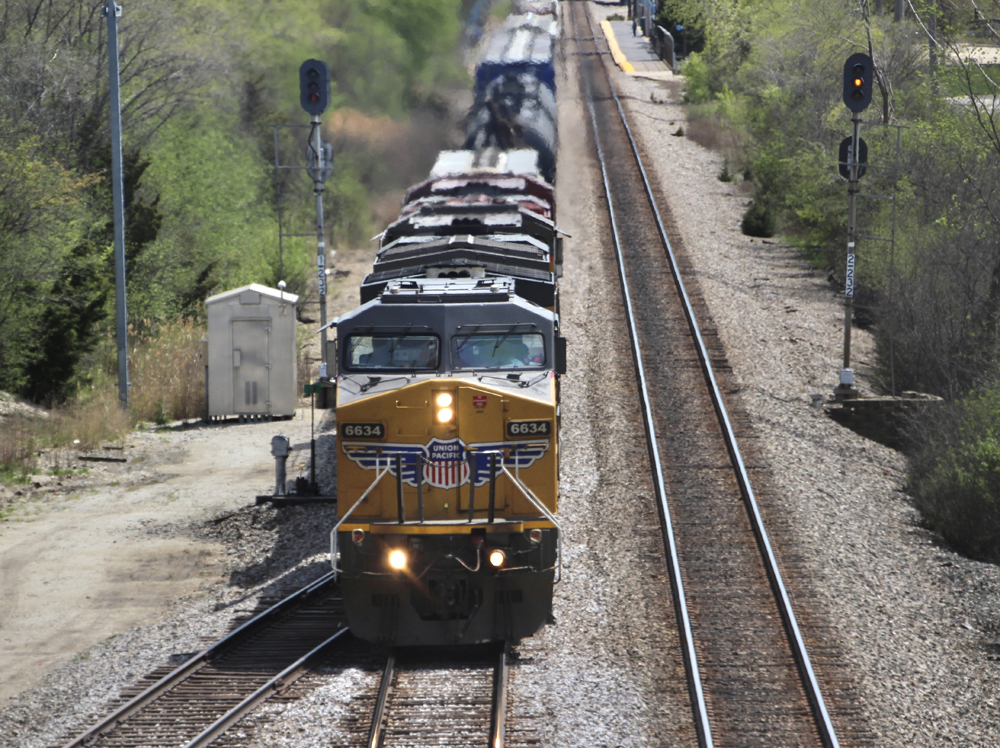
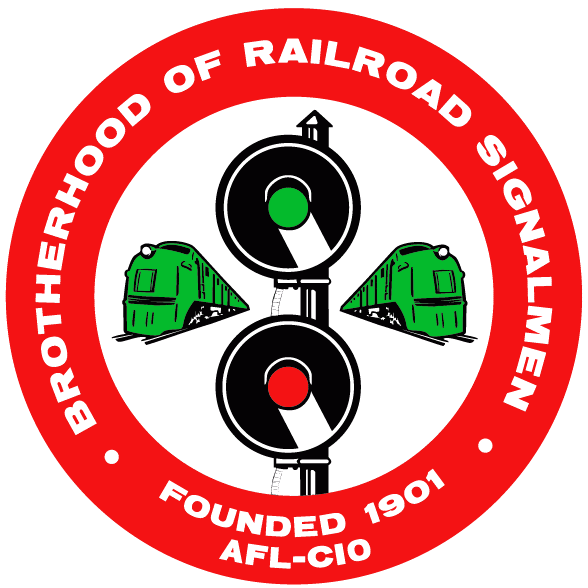
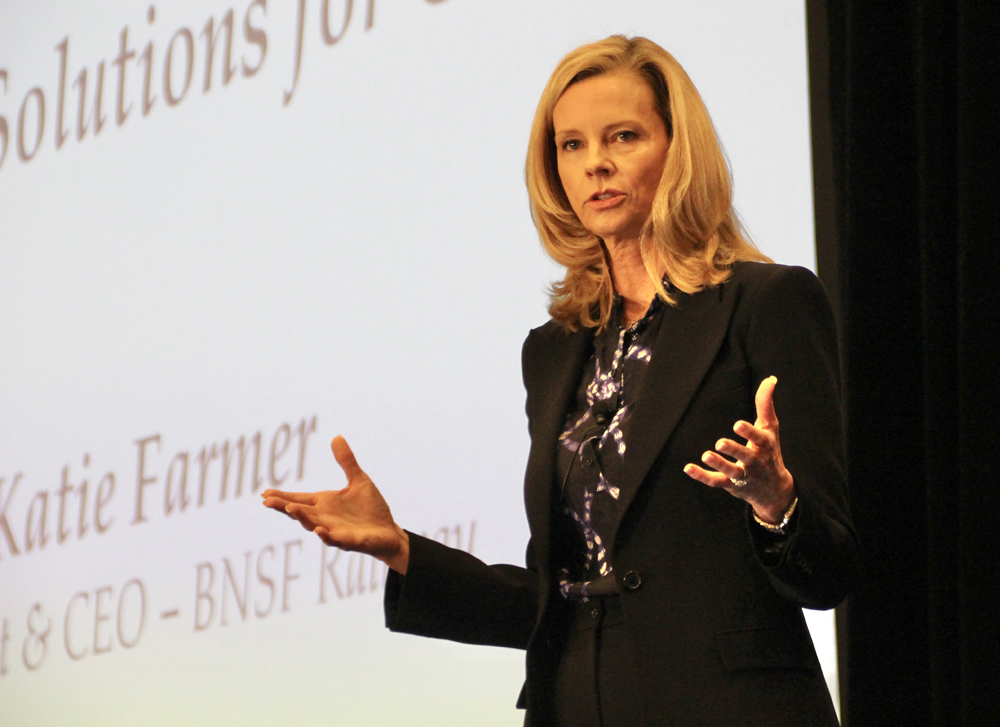




The TSB calls the host railroad CP because this event took place in 2022 before it was formally changed to CPKC.